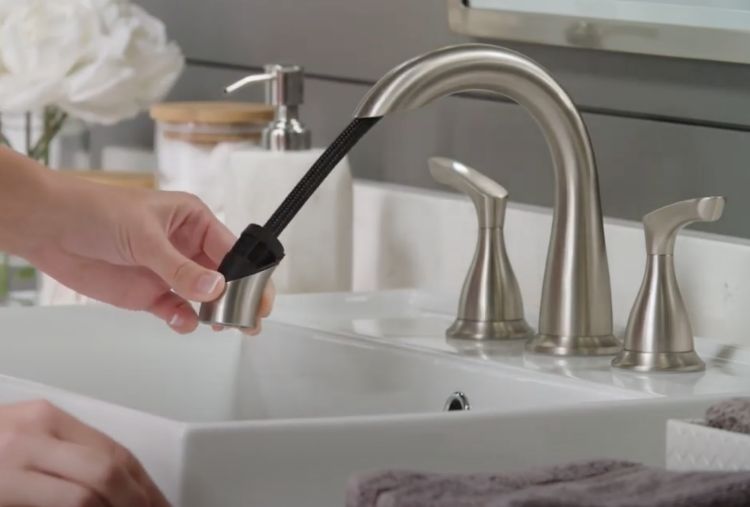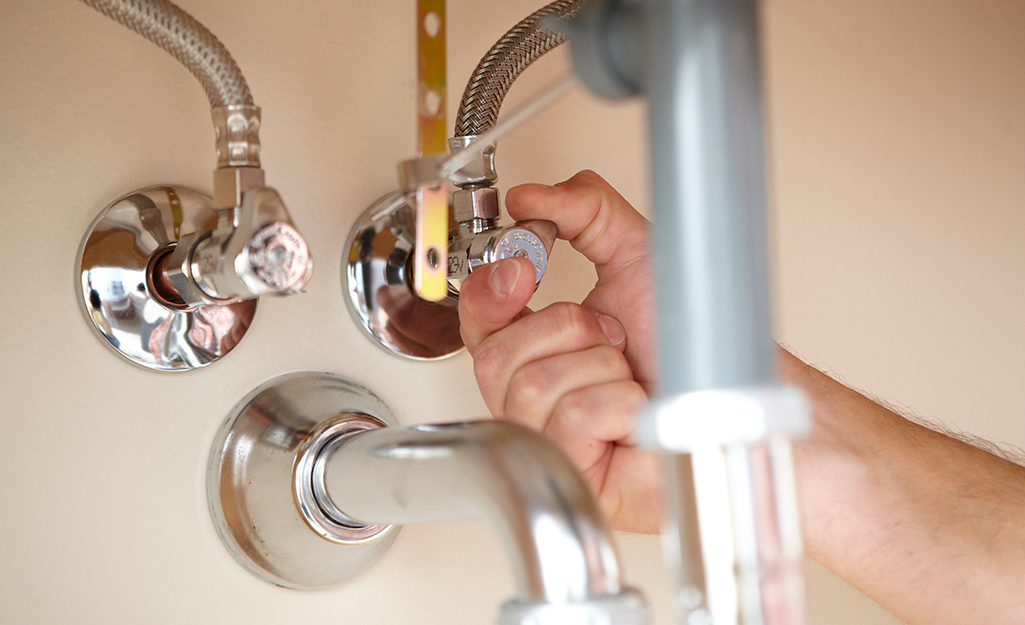Why It's Vital to Mend a Broken Faucet
Why It's Vital to Mend a Broken Faucet
Blog Article
We've stumbled on the article pertaining to What Causes Leaky Faucets & How To Fix Them directly below on the internet and believe it made perfect sense to share it with you in this article.

Leaking taps might seem like a minor aggravation, but their influence goes beyond simply the nuisance of the audio. From drainage to sustaining unneeded monetary costs and health and wellness risks, ignoring a dripping faucet can result in numerous consequences. In this short article, we'll look into why it's crucial to address this usual house concern without delay and properly.
Wastefulness of Water
Ecological Impact
Trickling taps add dramatically to water waste. According to the Environmental Protection Agency (EPA), a solitary tap leaking at one drip per second can waste more than 3,000 gallons of water per year. This not only stress water sources however also affects ecological communities and wildlife based on them.
Financial Prices
Increased Water Bills
Past the ecological influence, leaking taps can pump up water costs substantially. The collected wastage with time translates into greater energy expenses, which could have been avoided with timely repair services.
Prospective Building Damages
In addition, prolonged leaking can cause damage to fixtures and surface areas surrounding the faucet. Water build-up can cause discoloration, corrosion, and also structural issues if left unattended, leading to added fixing prices.
Health and wellness Concerns
Mold And Mildew and Mildew Growth
The consistent existence of moisture from a trickling faucet develops an ideal setting for mold and mildew growth. These fungis not just compromise indoor air top quality however likewise posture wellness risks, particularly for individuals with respiratory problems or allergic reactions.
Waterborne Conditions
Stationary water in dripping taps can end up being a breeding place for germs and other virus, boosting the risk of waterborne diseases. Impurities such as Legionella bacteria flourish in stationary water, possibly resulting in major illnesses when consumed or breathed in.
DIY vs. Specialist Repair
Advantages and disadvantages of Do It Yourself Repair Service
While some might try to repair a leaking tap themselves, DIY repair services come with their very own set of challenges. Without correct knowledge and tools, DIY attempts can worsen the issue or cause insufficient repair work, lengthening the trouble.
Advantages of Working With a Specialist Plumber
Hiring an expert plumber guarantees that the underlying cause of the leaking tap is addressed properly. Plumbings have the know-how and equipment to detect and repair tap concerns efficiently, conserving time and lessening the threat of additional damage.
Step-by-Step Guide to Dealing With a Dripping Tap
Devices Needed
Prior to attempting to take care of a dripping faucet, gather the necessary devices, including a flexible wrench, screwdrivers, replacement parts (such as washing machines or cartridges), and plumber's tape.
Common Faucet Issues and Their Solutions
Determine the type of tap and the certain concern causing the drip. Common issues include damaged washers, corroded valve seats, or defective O-rings. Refer to maker directions or on the internet tutorials for step-by-step advice on fixings.
Preventive Measures
Regular Upkeep Tips
To avoid leaking taps, do regular upkeep such as cleaning aerators, examining for leaks, and replacing damaged parts quickly. Additionally, consider setting up water-saving gadgets or upgrading to much more efficient fixtures.
Importance of Prompt Repairs
Addressing trickling taps as quickly as they're discovered avoids further water wastefulness and possible damage, ultimately saving both water and cash in the future.
Effect On Residential Property Value
Perception of Well-Maintained Building
Preserving a home in good condition, including attending to maintenance problems like leaking faucets, improves its perceived value and worth among possible buyers or renters.
Impact on Resale Value
Qualities with well-maintained plumbing fixtures, consisting of taps, command greater resale worths in the real estate market. Dealing with trickling taps can add to a positive impression during residential property examinations and negotiations.
Environmental Responsibility
Individual Contribution to Conservation
Taking responsibility for taking care of leaking taps lines up with wider efforts toward water conservation and ecological sustainability. Every person's activities collectively make a considerable impact on preserving priceless sources.
Sustainable Living Practices
By prioritizing prompt repairs and taking on water-saving routines, individuals add to lasting living methods that profit both existing and future generations.
Conclusion
Resolving a leaking faucet surpasses mere ease; it's a vital step towards saving water, reducing monetary prices, and protecting wellness and home. Whether via DIY repair services or expert assistance, doing something about it to take care of dripping taps is a small yet impactful method to advertise accountable stewardship of sources and contribute to a much healthier, more lasting future.
How to Fix a Dripping or Leaky Faucet
A leaking faucet is one of the most common problems that homeowners encounter, but it being commonplace doesn’t make it any less annoying. The constant drip drip drip of a leaking bathtub faucet, showerhead, or sink tap can disturb your home’s serenity. Left neglected, a dripping faucet can also result in higher water bills and discoloration or mold growth in your sink or plumbing fixtures.
Fortunately, you don’t have to be a trained plumber to know how to stop a dripping faucet. With some basic tools, replacement parts, and a little patience, leaky faucet repair is a breeze. In this article, we’ll explain what causes dripping faucets and how you can fix them.
What Causes a Leaking Faucet?
Kitchen and bathroom faucets come in all manner of designs, but most involve some combination of valves, O-rings, seals, and washers. The O-ring is usually the weakest link, but any one of these pieces can wear down over time. Heat, moisture, temperature fluctuations, minerals, mold, and movement can contribute to warping and corrosion, breaking the watertight seal. This just comes with the territory of being a homeowner. Everything is always subject to wear and tear, and some component parts of your appliances and fixtures need to be replaced on occasion. At least replacement O-rings are cheap!
More rarely, dripping faucets can be a symptom of excessively high water pressure. Were this the case in your home, you would probably notice that the leak is not isolated to one faucet. Water pressure issues are harder to resolve on your own. We recommend contacting a professional plumber if you suspect your water pressure is too high.
How to Fix a Dripping Faucet
Pipe wrench or monkey wrench Allen wrench set Screwdrivers Old towel or rag Shut off the water.
Before you do anything, you need to turn off the water to keep from drenching your kitchen or bathroom. You should find a valve under the sink and against the wall. Once you’ve turned this valve, try turning the faucet on to confirm that the water source has been cut off.
If you can’t locate your local valve for the faucet you’re working on, you can always shut off the water to the house at the main valve. Of course, this will prohibit anyone from using the sinks, showers, or toilets while you’re working on the faucet that’s giving you trouble.
Plug or block the drain.
You’ll be disassembling the faucet and removing some small bits of hardware. Plug the drain with a stopper or rag to avoid the possibility of a small screw falling into your P-trap.
Take apart the faucet assembly.
There are several varieties of kitchen and bathroom faucets, each with its own manner of assembly. For detailed instructions on how to disassemble your faucet, you can refer to the fixture’s manual or contact the manufacturer. If you know whether you have a ball, disc, cartridge, or compression faucet, you can find detailed schematics online.
In general, you need to begin by removing the faucet handles. You might notice a small screw that you’ll need to remove with a screwdriver or Allen wrench. If you don’t see any visible securing hardware, it’s likely hidden under a decorative cap that can be unscrewed or popped off with flathead screwdriver.
Remove each piece methodically, consulting a schematic when necessary. Take notes or arrange the pieces in such a way to make it easier to correctly reassemble the faucet later.
Remove the cartridge.
Once you’ve removed the handles and securing hardware, you should be able to remove the valve cartridge or stem. Some cartridges will slide right out. Other faucet models will require you to loosen a nut with a pipe wrench before you can remove the valve stem.
Examine the exposed hardware.
With the cartridge or stem removed, inspect the component parts. Check the rubber O-rings for wear and tear. Also examine the seat washer for corrosion or other damage. These pieces are usually the responsible parties for a dripping faucet, but it’s worth inspecting the other component parts while you have the faucet disassembled.
Find replacement parts.
Once you’ve identified which faucet component has failed, find an identical replacement. Your local hardware store should have O-rings, seat washers, and other standard components in stock. If you have a luxury or uncommon faucet, you may have to contact the manufacturer for a replacement part.
It’s a good idea to take your old parts with you to the hardware store so you can compare them with the store’s inventory and be sure you’re purchasing the correct replacement.
Reassemble the faucet.
With your new parts in hand, reconstruct the faucet and handles. Don’t be tempted to overtighten screws or nuts. You might think this could create a better seal, but it can instead damage or bend a delicate part of the assembly and create a new problem for you.
Turn on the water and test the faucet.
The only thing left to do is test your work. Unplug the sink, turn the water back on, and try the faucet. Congratulate yourself on a job well done!
https://www.libertyhomeguard.com/how-to-fix-a-dripping-or-leaky-faucet/

I was shown that editorial on How to Fix a Dripping or Leaky Faucet from a buddy on our other web page. Enjoyed our write-up? Please share it. Help someone else check it out. We truly appreciate your readership.
Report this page